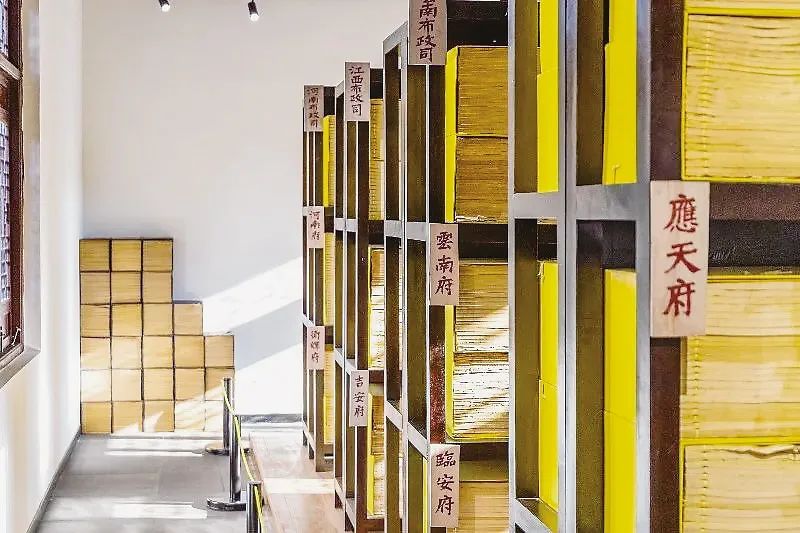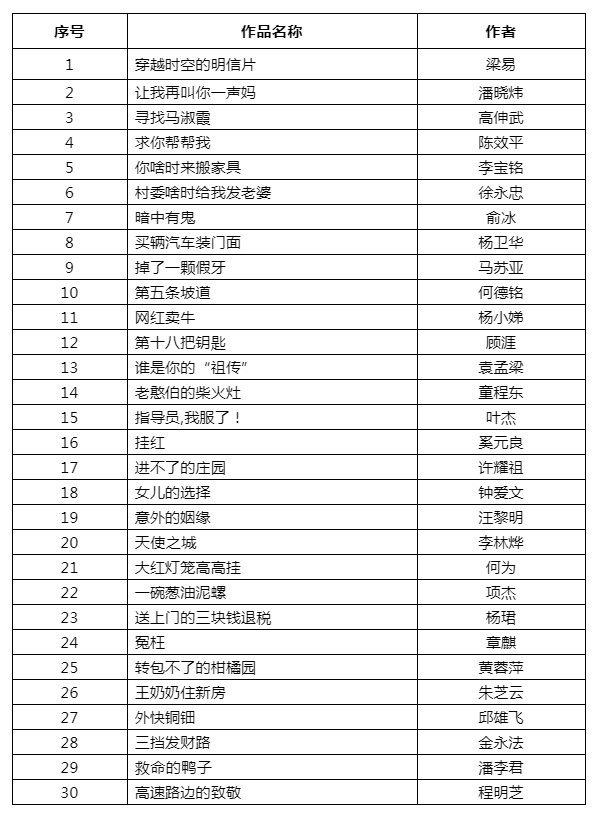The museum ushered in the "punch card" hot before school!Tax cultural relics attract children
Author:State Administration of Taxati Time:2022.08.31

Recently, museums in various places ushered in the "punch card" heat before school. Tax cultural relics such as Huangba, Southern Song Dynasty, Southern Song Dynasty, and Warring States Muyu attracted students to line up and became the cultural relics that were popular in the summer. While appreciating the charm of taxi cultural relics through time and space, the students also learned about the tax history behind them in a relaxed and happy atmosphere.
Looking at the "tax big database" of the Ming Dynasty from Huangba
The Yellow Book of the Ming Dynasty was the National Archives of the Ming Dynasty. The yellow book stored was the basis for the government's taxation to pay taxes. At the peak season of the summer museum, many students participated in the research activities organized by the park. We saw the original appearance of the National Archives more than 600 years ago and experienced the charm of the "tax big database" in the Ming Dynasty.

The so -called yellow book is a register for the government to count the household registration and land information. Based on the data on the yellow book, the government is taxed on the population and the field. In the age when the computer had not been released, the yellow book was the government's "tax big database".
Tian Fu and the Campaign are the two major obligations of the people of the feudal society in China. The government's collection of Tian Fu and the emperor's service must accurately grasp the country's land and population. the core element.
At the beginning of the Ming Dynasty, the minister Ye Boju pointed out that "there is a hukou and the fields are opened, and the fields are paid to increase taxes." Therefore, Zhu Yuanzhang issued a "household post" in Hongwu in three years (1370), asking for comprehensive statistics on the national population and family property, including basic information such as each household's population, age, real estate, and number of fields. In the fourteenth year of Hongwu (1381), the household post calculated the national population data, but this is only the "primary version" yellow book, because it only solves the problem of arranging the service according to the population. Field information across the country.

Compared with statistical population information, the difficulty of field information has increased in index level. The field does not have an official unified measurement standard, which is divided into the size of acres. In addition, the fields of fields are irregular, and the calculation area is difficult. Even if the statistical technical problems are resolved, the difference in the output of fields is difficult to uniform standards. In order to solve this problem, the local state government introduced the concept of "tax acre" when drawing the aton, that is, determining the area of the field of 1 stone to be able to produce grains as 1 tax mu. Data unit.
From the three years of Hongwu's "Household Post" to the 20 -year fish scales volume of Hongwu, Zhu Yuanzhang used the two big data packets of the household registration information (household post) and field information (fish scales) for 17 years. It was successfully loaded to the Daming's "Tax Database" (yellow book), and finally controlled the effective management power of the service and Tian Fu in the hands of the court.
A piece of silver ingot takes you to understand the "out tax" in the Song Dynasty
"Wow! So big silver ingot!"
In the summer of this year, a group of elementary and middle school students came to the Wuhan Tax Museum to visit.

In China, silver ingots originated in the Han Dynasty. The Tang and Song dynasties were relatively small, and Yuan Ming began to prevail. The silver ingots in different periods were different in use, form, and inscriptions. At the earliest, the silver ingot was only used as a tribute to the royal family, and later used it for the tribute, presenting gifts, the distribution, the army of the army, the disaster relief, and the reward. Since the Sui and Tang dynasties, silver ingots have become circulation in the market. Compared with copper coins, iron or banknotes, it has won the preference for the world because of its "hard currency" characteristics.
In terms of form, silver ingots mainly include long strips, square shapes, round cake shapes, sub -waist, horseshoe shapes, etc. Most of the Tang Dynasty were long strips, and the Song Dynasty was mainly sub -waist. Among them, the Southern Song Dynasty was the tail waist, similar to pig kidneys, commonly known as "pork waist silver". During the Ming and Qing Dynasties, horseshoe was the most common. The people were usually called "horseshoe silver" or "ingot".
The Silver ingots of the Northern Song Dynasty were basically official, and in the Southern Song Dynasty, civil institutions gradually participated in casting. Most of the silver ingots have inscriptions, years, weight, color, casting land, casting mechanism, and craftsman names. The Northern Song Dynasty was generally carved by hand, and the Southern Song Dynasty began to use special poke models, and the number of words changed from less. The Southern Song Dynasty's "Out Tax" silver ingot has a total of 4 inscriptions of 4 rows of schedules. Among them, the 5 -character "help Li Xiaowu" on the left, "Li Xiaowu" is the name of the craftsman. The "out tax" tax (maybe copper coins, iron or banknotes) converted into silver two, and then cast into silver ingots.
In fact, "going out taxes" does not point out the door to pay taxes. The commercial tax of the Song Dynasty included taxes and residential taxes. Among them, taxes were levied on the tax rate for businessmen (merchants) who trafficking goods, with a tax rate of 2%. "Out taxation" is a tax of overlap. It is a passing tax levied to the trafficking of merchants when trading goods in and out of the city. The earliest "national tax" from the Northern Song Dynasty, that is, the taxes that businessmen need to pay when traded in the border discussion. Later, due to the heavy burden of the Song Dynasty and the burden of military expenses, the "national tax" gradually evolved into "out taxes", and the local government raced to set up a card tax on a large and small city gate.
The tax history behind a Warring States Wooden Bagua
In August, Qingchuan County, Sichuan Province, the hot sun of Yanyan could not stop the students' enthusiasm for the summer. Many parents brought their children to the Qingchuan County Museum to watch the national first -class cultural relics -Qingchuan Muyu.

Wooden is a wooden tablet with text. Qingchuan Muyu is the earliest Qin Muyu in my country. The text on the wooden puppet was a government statement in the farmland water conservancy at that time. The second year of Qin Wu (309 BC) Gan Mao and others were ordered to be ordered to be in Sichuan (then The incident that belongs to the belonging to the Qin Dynasty) to implement a new land policy, which is of great value for studying the economic system of Qin State. Qingchuan wooden crickets are 46 cm long, 2.5 cm wide, and 0.4 cm thick. The front is written with 3 columns and 121 words, and 4 columns are written on the back. The positive text is: In the second year of King Qin Wu, King Qin Wu ordered his prime minister Gan Mao and the inner Shi Shi to change the "The Law of the Temple" of King Qin Wu: every step in the farmland, eight steps long, the fields must be created. Each acre of farmland must have two fields and one stranger; one hundred acres of one hectare, one tunnel, three steps wide. The height is four feet, the size and height are equal; the height is one foot, and the base is two feet thick. In August in autumn, the sealing of the seal is built, the field world is destroyed, and the deserted grass grows on the Mo Mo; in September, a large -scale renovation of roads and difficult places; Unblocked, eliminate weeds. During the season of renovation, if road destruction cannot be passed, it should be revised immediately.
Among them, the strangers, Tao Tao, and Mo Mo are all roads in the middle of the farmland. This is the ordinary road, but witnessed the transformation of the slavery economy to the feudal economy.
During the Warring States Period, in order to mobilize the enthusiasm of the workers, the vassal countries abolished the well field system and reform the taxation system. In the six years of Qin Xiaogong (356 BC) and the twelve years of Qin Xiaogong (350 BC), Shang Yang has two reforms. Change a hundred steps and one acre to 240 steps and one acre, and expand and rebuild it as a stranger and stranger as the field division line. The landlord or farmers will all pay taxes. After reform, the economy of the Qin Kingdom has been greatly developed, and it has gradually become the strongest country with the strongest strength of the 7 vassals, creating conditions for the unification of the country. In 316 BC, the Qin Kingdom swallowed the Shu Kingdom, and then promoted the practice of Shang Yang's reform such as "Kaishi Mo Fengjiang for Tian Kaiyu" to Sichuan, and unified the shape and size of the local field acre according to the Qin law. And Qingchuan Muyu is an important testimony of this historical event.
Source: China Tax News
Editor in charge: Zhang Feiyang
- END -
In 2025, the Yellow River Cultural Relics Resources Survey will be completed
According to a reporter from Xinhua News Agency on July 18 from the State Administration of Cultural Relics, according to the Yellow River Cultural Relics Protection and Utilization Plan recently is
Tell a good story!Ningbo 8 works were awarded 2022 Zhejiang year good story

The results of the award of the Communist Party and the Fourth Zhejiang Folk Story...